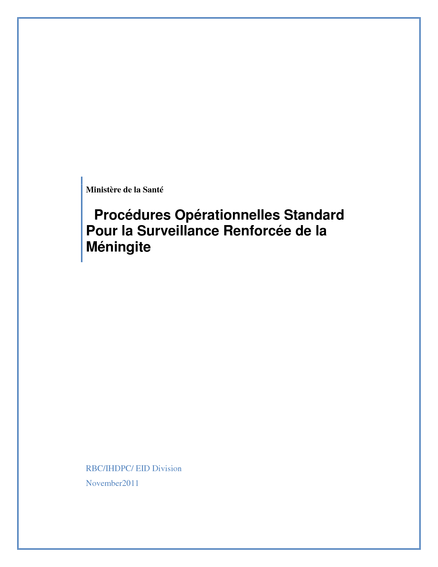Procédures Opérationnelles Standard Pour la Surveillance Renforcée de la Méningite
RBC/IHDPC/ EID Division | November 2011 - Ce manuel de procédure vise à
guider les professionnels de soins de santé et des experts en santé publique de différents niveaux du système de santé dans la mise en œuvre de la surveillance renforcée de la méningite cérébrospinale.


